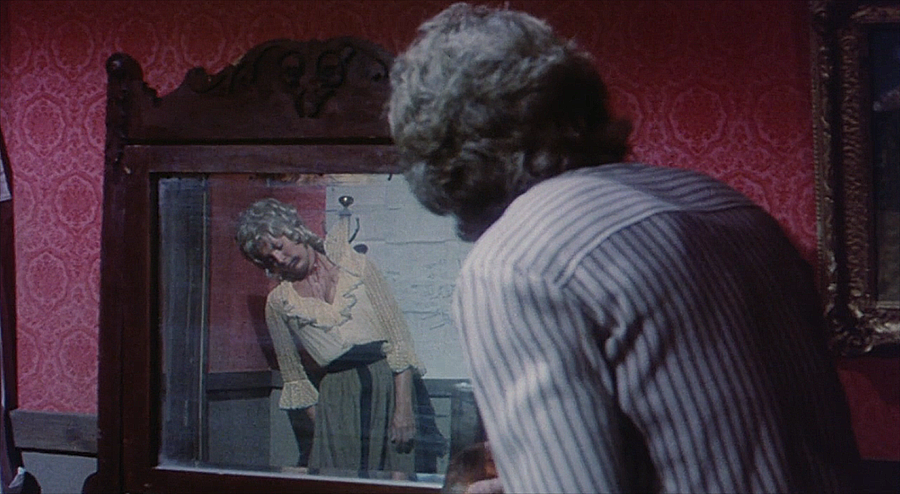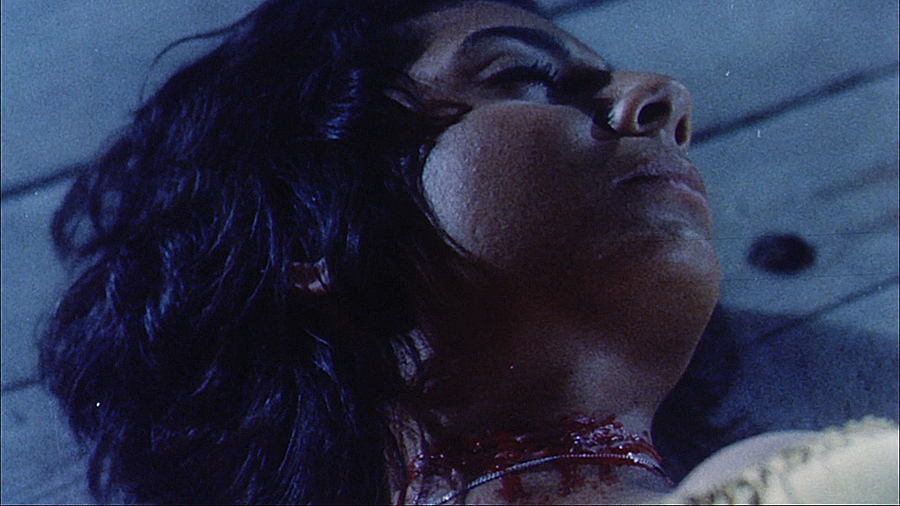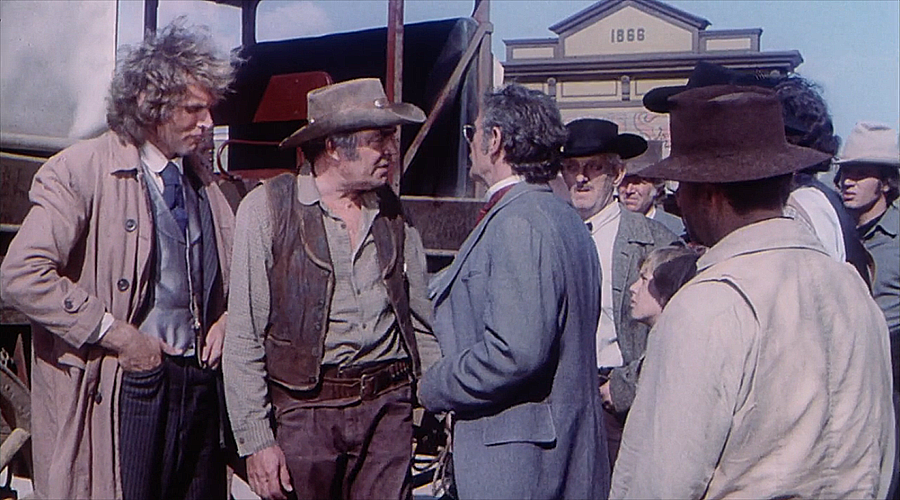A KNIFE FOR THE LADIES
Directed by Larry G. Spangler. 1974. United States.

It’s an auspicious premise. Jack the Ripper in the Old West. Imagine a special giallo episode of Gunsmoke. Sounds great, doesn’t it? There are surprisingly few horror westerns out there, far fewer than anyone would probably imagine. The Western has been a staple of American cinema since practically the birth of American cinema. Given the lonesome plains, decaying towns, and roving bands of bandits and bastards often seen in the genre, I would have expected far more frequent crossovers into horror territory.
Alas, the horror western is more of an oddity than a staple. A KNIFE FOR THE LADIES certainly didn’t change that. It probably could have been a much grander success than it was if anyone had faith in it. Watching the film for the first time, I was struck by how cheap it felt, how it resembled a made-for-TV movie rather than anything destined for theatrical distribution. It’s weirdly constructed, with the 1970s influences rubbing abrasively against the Old West cliches and settings. It feels like a film out of time, drifting in some temporal miasma where the Old West didn’t end in 1890, and instead persisted for another hundred years. The funky score feels like something you’d find in a cheap cop actioner. Our lead actor must have had it in his contract that he wouldn’t lose the blowout haircut. He looks like a Partridge Family extra that got lost on the set of Bonanza. It’s just strange and off-putting. But maybe it kinda worked in the film’s favor for me. More on that in a minute.
First, a synopsis: The town is Mescal. The year is 1883. We open with a prostitute lying nude in bed. A black gloved killer enters and slices her throat. The town Sheriff, Jarrod Concord, is under pressure to find the mysterious murderer. This isn’t the first victim. No, that was Travis Mescal, the sole child of Elizabeth Mescal, the town matriarch. A private detective named Edward Burns is sent for. If the drunken Sheriff can’t solve the crime, Burns will. Shortly after, another prostitute is found with her throat slashed. Barkeep Virgil and his gang chase down the man they believe is responsible for the crime. On his way into town the next day, Burns finds the man hanging from a tree.
Burns doesn’t believe the dead man was responsible for the rash of murders, and no one is owning up to the lynching. Burns is a bit of an asshole, rubbing everyone the wrong way, especially Sheriff Colcord. Will the two men, one from the big city, the other from a small town, be able to put aside their differences and IN THE HEAT OF THE NIGHT this shit before another murder occurs? Spoiler alert: the answer is yes. One fist fight later, the two men settle their differences and get to work solving the crime. But in a town where everyone is a suspect, how do you even begin figuring all of this out?

Now, I made that sound at least 61.8% more interesting than it actually is. A KNIFE FOR THE LADIES isn’t some action-packed, set-piece-laden crime thriller full of chase scenes and shootouts. Most of the second act is devoted to coaxing Virgil into spilling the beans about his role in the hanging death of a wrongfully accused man. The black-gloved killer takes a backseat for quite some time. While all of this is going on, we get to juggle a full cast of townies, some of them bizarre, some meek, some very angry. This secondary cast of characters is full of recognizable TV and film stars, or at least recognizable to those of us with fathers who watch old westerns for 16 hours a day. Say what you will about this little film, but you can’t deny it has a great cast full of character actors and day players, including the great Jack Elam, Gene Evans, and Jack Kellogg.
We get to spend quite a bit of time soaking in the town atmosphere. I appreciated some of the wit, like the town barber also being the town undertaker, resulting in half of his shop windows advertising stylish cuts and shaves. The other windows just say “mortuary”. I liked the lovely Diana Ewing as the music teacher love interest, and Ruth Roman as the reclusive town matriarch hiding a terrible secret. I didn’t mind that we weren’t progressing at a fast pace. It gave me time to enjoy some good actors, even if it meant watching them struggle with some mediocre material. My only wish is that the film had an extra five grand in its back pocket. For all the talk of how wonderful a town Mescal was, I sure wish I had gotten to see more of it. It felt too small for the large cast of characters.
The final third of the film shifts back into horror movie territory as the killer resumes their nighttime activities. We are treated to a scene of Burns and Colcord breaking into a crypt during a late-night thunderstorm. There’s a nice reveal of a corpse hanging in the back of a room. There’s a creepy scene of the undertaker having a heart-to-heart with a woman’s body before slapping it across the face. I will admit that while I saw one particular late-game reveal coming from a mile away, the reveal of the killer did throw me for a loop. The popular theory that Jack the Ripper was some guy murdering hookers as payback for a nasty case of syphilis is used here, but also subverted cleverly. The killer’s reveal and subsequent death were far and away my favorite moments in the film. I felt like I was watching a proper giallo movie, right down to a last-minute save by a well-placed bullet.

I think the reason why I’m walking away from A KNIFE FOR THE LADIES feeling like it was OK rather than kinda ughhh is because I’m a huge fan of giallo films. This really did feel like a mid-60s giallo, right down to the subdued violence. This is a film where you are only sure of the utter innocence of three characters: our two leads and a young boy. Literally anyone else could be the killer. Everyone has a motive, and everyone is written in a way that highlights potential duplicity. Had the screenwriters fleshed out the mystery and really concentrated their efforts on the whodunit side of the narrative, this could have absolutely been a winner.
As it stands, it’s perfectly fine. I actually enjoyed it a lot more than I thought I would, especially as the discordant mixture of 1970s sensibilities and 1880s setting is so pronounced that it is impossible to ignore. I had to fight the urge not to focus on it, to allow it to sink into my subconscious. Once I managed that, I just sat back and enjoyed the ride. It’s not a great film, but as someone who adores the more mundane gialli of the mid-60s, this gave me the same kind of easygoing, no-frills thrills. It’s a perfectly serviceable, lightweight time waster.